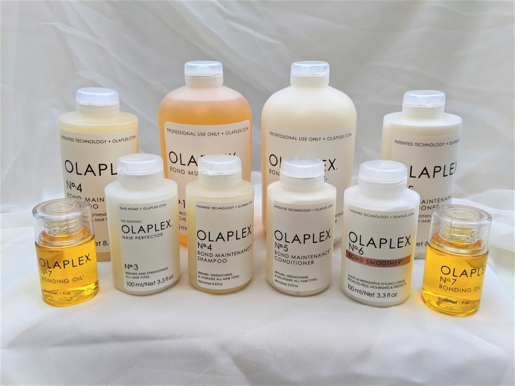Entrepreneurial Excellence

In recognition of his “innovative leadership in creating, developing, and commercializing revolutionary polymer-based therapeutics and personal-care products through multiple successful start-up companies,” Craig Hawker, professor of materials, chemistry and biochemistry at UC Santa Barbara, has received the American Chemical Society’s (ACS) 2021 Kathryn C. Hach Award for Entrepreneurial Success.
“This is huge. I personally put a lot of effort into my students, as well as into enhancing the entrepreneurial opportunities, success and recognition at UC Santa Barbara and throughout the University of California System, which is what this award is all about,” said Hawker, the Alan and Ruth Heeger Chair in Interdisciplinary Science, who also serves as director of the California NanoSystems Institute (CNSI) and the Dow Materials Institute, and is facilities director of the Materials Research Laboratory (MRL).
“We congratulate Craig Hawker on this wonderful recognition and honor from his peers,” said Rod Alferness, dean of the College of Engineering. “The award captures his critical contributions in the field of polymers from fundamental discovery and development, to commercialization and major societal impact in areas of medical therapeutics and personal care. We are extremely proud of Craig, who continues to serve as a role model for university research and innovation that we, at UCSB, value, encourage and foster.”
The annual Hach was established in 2012 to recognize an individual who created something where nothing existed before. In 1947, at the age of 25, Hach co-founded the Hach Chemical Company, which became instrumental in standardizing water-purification tests and pioneered many world-standard analytical instruments. Hach, who earned the nickname “Kitty” for flying her own plane across the country to sell water purification kits, died in June at the age of 97. Hawker said the award has special significance to him.
“I’m doubly honored and thrilled to receive this award because Kathryn Hach was such an inspiration, and even more so when you consider the current climate where diversity, equity and inclusion are more important than ever,” said Hawker, whose research activities focus on polymer chemistry, and integrate cross-disciplinary studies with the development of materials having unique physical and mechanical properties.
In addition to advancing fundamental polymer and materials science, Hawker’s groundbreaking research has also formed the basis for more than 80 U.S. patents and 10 start-up companies. A number of these companies have developed drugs to improve the quality of life for people who suffer from chronic kidney disease (CKD).
“From my early days working with Symyx, the idea of treating a metabolic disease with a cross-linked, orally administered polymer was a powerful, yet underexplored solution to a range of existing problems. The patient mixes the drug with water and drinks it. As the polymer passes through the gastrointestinal tract, it absorbs unwanted metabolic by-products, essentially filtering out what the kidneys cannot,” said Hawker. “A lot of injected drugs have more serious side effects, but we lowered the risk by developing polymer-based drugs that do not accumulate in the body or enter the bloodstream and are flushed out when the person goes to the bathroom.”
Ilypsa, a spin-off from Symyx, developed a drug approved by the Food and Drug Administration (FDA) to bind to phosphate to treat hyperphosphatemia, an electrolyte disorder in which people have an elevated level of phosphate in their blood. After selling Ilypsa to Amgen in 2007, Hawker said the team, many of whom were his former students, felt there was more work to be done.
“That’s when Relypsa was started, which led to the development of Veltassa, a cross-linked polymer with a different chemistry that binds to potassium to help people who suffer from hyperkalemia,” explained Hawker. The condition, associated with elevated potassium levels, can cause sudden heart attacks and other serious health issues. Veltassa was approved by the FDA in 2015 with Relypsa being sold to Vifor Pharma in 2016.
After Relypsa, Hawker again worked with a number of his former students, this time to establish Tricida, focusing on the development and commercialization of Veverimer, a non-absorbed, orally-administered polymer designed to treat metabolic acidosis in patients with chronic kidney disease (CKD). A chronic condition commonly caused by CKD, metabolic acidosis is believed to accelerate the progression of CKD and increase the risk of muscle wasting and loss of bone density.
“The design of Veverimer may improve the quality of life and care for approximately 3 million patients with CKD in the United States,” said Hawker, a fellow of the Royal Society, National Academy of Inventors, and American Academy of Arts and Sciences. “We are working on FDA approval and hope that Veverimer becomes the first treatment for chronic metabolic acidosis.”
Hawker said that teamwork and reaching across boundaries have been constant themes in his career. The best example of this is the success of Olaplex, a company started with local beauty industry veterans Dean and Darcy Christal, and inspired by research conducted by Hawker and his former student, Eric Pressly. Working in Pressly’s garage, Hawker and Pressly developed the patented Olaplex hair repair technology to prevent bleaching and coloring agents from disrupting disulfide bonds in hair. “We brought an outsider’s viewpoint to a relatively mature field and looked at haircare on a molecular level,” said Hawker.
When considering his entrepreneurial success, Hawker says the fact that he is most proud of is that nearly all of the companies he’s had the honor of working with were driven by his students. At Tricida, one of his former UC Santa Barbara undergraduate students is the head of chemistry, and leaders include former Ph.D. students and postdocs.
“UCSB has rapidly become a vibrant community for innovative students who want to make a difference in the world. It’s such change from my student days when the entrepreneurial culture and support network did not exist,” said Hawker.
He credits multi-investigator programs such as the campus’s MRL, which is funded by the National Science Foundation, and the Institutes for Science and Innovation that were launched in 2000 by then California Governor Gray Davis for sparking the change. To address large-scale problems through interdisciplinary research and new market applications, the initiative launched four visionary institutions on UC campuses, including CNSI at UC Santa Barbara and at UCLA.
“CNSI and the other institutes are an incredible systemwide resource. They’ve provided the infrastructure that allows companies to get started and progress through the valley of death period,” explained Hawker, referring to the period in a start-up’s trajectory when it needs funding to scale up to profitability. “It changes the students’ mindsets. They think, ‘We can do this, we can have an idea, and we can see it through to a successful, high-impact company.’”
The numerous on-campus resources now available to UC Santa Barbara students include the Technology Management Program, CNSI’s Technology Incubator, the MRL, the New Venture Competition, and the Office of Technology and Industry Alliances. Hawker cites the recent success of Apeel Sciences, founded by materials alumnus James Rogers and identified as one of Time magazine’s 50 genius companies of 2018, as further evidence that the entrepreneurial culture is producing results with UC Santa Barbara providing a vital pipeline of talent for local companies.
“All of these resources we’ve been working hard to establish on campus are really starting to bear fruit,” said Hawker, explaining that it translates to a win-win for the local and state economies. “Through innovative research on UC campuses, training of next-generation entrepreneurs, and the development of incubators, we are creating an ecosystem which will allow companies to get established and then thrive in California. These companies generate thousands of jobs and billions of dollars in economic value for the state.”
Hawker’s entrepreneurial success also made an impact on the health and safety of local healthcare providers during the COVID-19 pandemic. He used the connections that he made while at Olaplex to help solve the shortage of personal protective equipment and hand sanitizer in the Santa Barbara area.
“With tremendous assistance from the Christals, we started tapping into that supply chain to make face shields and hand sanitizer. To date, we have manufactured and distributed nearly 13,000 face shields to county healthcare facilities, at UCSB, and in the local community. I just got a request the other day to produce 50 shields for teachers at a local elementary school,” said Hawker.
He will accept the award during a ceremony in March, held in conjunction with the ACS 2021 Spring National Meeting in San Antonio, Texas. Hawker will receive a $20,000 prize and will be featured in the official ACS publication, Chemical & Engineering News.
“I’m personally thrilled to get this award. It is recognition of my wonderful students and the dedicated CNSI and MRL staff. It is also acknowledgement that we are having an impact across the entire UC system, providing an economic engine for the people of California, now and in the future,” he said.





